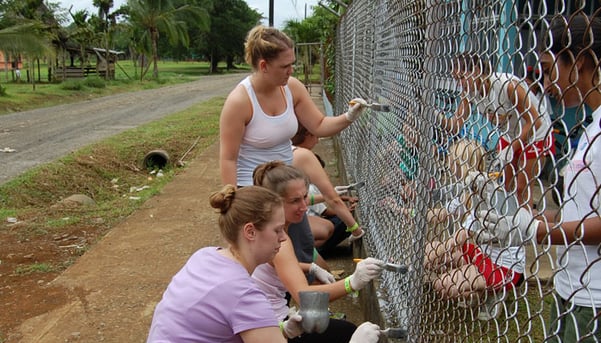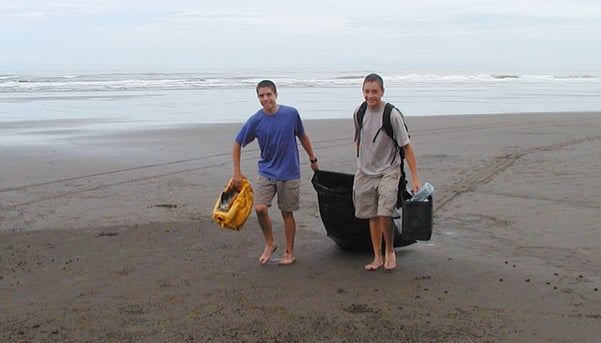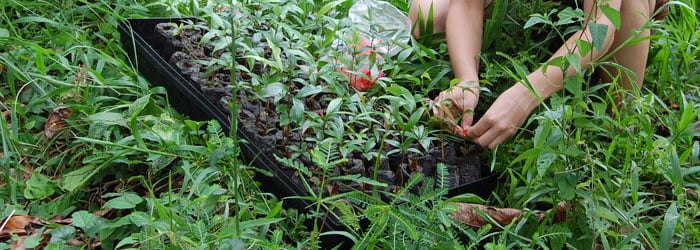Giving Back: Incorporating Service Projects into Your Group Travel Program
Oftentimes, travelers wish to give back to the communities they visit. This is an understandable impulse, and when done correctly, can be the most rewarding part of your trip. Done carelessly, however, your contribution could make more work for your host community or negatively impact the local environment; despite your good intentions, you could do more harm than good. (Much has been written about the potential pitfalls of “voluntourism.” This article from 2016 outlines the dilemma well.) If you’re interested in incorporating service work into your travel program but not sure how to go about it responsibly, read on for three important considerations and three ways to give back.
 photo by Kelly Jarvis
photo by Kelly Jarvis
Three important considerations:
-
Make sure you’re fulfilling a genuine community need. Keep in mind that local organizations know better than anyone what they need most. For this reason, flexibility is key. Your project should be based on the community’s needs at your time of travel, which means they could change at the last minute. To balance that uncertainty, “If you are working with a local organization, they may be able to give you options, such as a reforestation project, building a sidewalk, or painting a classroom, for example,” says Holbrook’s Debbie Jordan. Working with community organizations also means being mindful of their schedules and of the changes they experience.
-
Approach community organizations as equal partners. As volunteers or donors, your group is there to serve the local community and not the other way around. “For student groups, we look for opportunities for to get them working alongside peers in that country when possible. One of the biggest concerns about service work is the fact that sometimes they feel like they are just ‘doing the work’ and there is no connection with the community,” Jordan says. To that end, she suggests coming prepared to share something with the community about your life back home. It’s also important to work with an organization that you feel is transparent about their mission and who your contribution is benefitting.
-
Encourage your group to adopt responsible practices. Make sure your group takes steps to be respectful of the host community and its environment: don’t litter, try not to waste water, and if possible, offset the emissions from your journey. Be respectful of local customs, treat your hosts with respect, and remember that you are their guest. You don’t want to counteract the positive benefits of your experience by causing harm elsewhere.
 photo by Paulo Valerio
photo by Paulo Valerio
-
Donating money: There are several ways your travelers can contribute to the local communities they visit. One option is to raise money beforehand to donate to a local school or nonprofit. Fundraising activities done back home, like car washes or bake sales, can double as a team-building exercise if your travelers don’t know each other well. In some cases monetary donations, while they may feel less personal, may be the most effective way to help – local organizations might already have the manpower and specialized know-how for a project, and just need the funds to make it happen.
-
Donating supplies: In other instances, donating supplies can be beneficial, especially when access to those supplies is limited in the host country or if they’re prohibitively expensive there. (For example, in Cuba everything is rationed, including food, clothing, and toiletries. Small gifts, such as pencils or bars of soap, are often appreciated.)
Work with a local partner – be it a school, nonprofit organization, or community leader – to find out ahead of time what supplies are needed so your participants have time to gather them before departure. Alternatively, there are several organizations that have an existing framework for donating or transporting donated supplies, like Pack for a Purpose or the American Birding Association’s Birders’ Exchange.
-
Donating time: Lastly, there are some community service projects travelers can participate in, even for a short duration, that will have a lasting impact. Even a weeklong, very focused effort can benefit all involved, especially if it’s part of a longer, ongoing project. For example, Holbrook travelers frequently volunteer in collaboration with the Sarapiquí Conservation Learning Center in Costa Rica, building on and adding to projects started on by previous travelers.
Planting trees as part of a reforestation project, helping with minor maintenance or repairs at a local school, a beach clean-up, or monitoring nesting sea turtles are all examples of projects that can have a significant impact.
After it’s all over, providing your travelers with structured time for reflection is a great way to put the experience in perspective. “The real service learning part is up to the group leader, and in how they present the projects they are doing and how they affect the community and the environment,” says Jordan.
Asking questions like “What needs did our project help fill?”, “What are the causes of those needs?”, and “How can we continue our involvement with this group or social issue?” can help turn a rewarding experience into a life-changing one.
main photo by Kelly Jarvis


